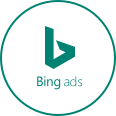 SEO, or Search Engine Optimization, in simplest terms is a process by which non-ad web pages or websites get moved to the top of the search order when someone does a web search through Google or Bing or Yahoo, etc. The closer to the top of the search results and being on the first page of those results, just under the paid ads, means that the website or web page will get more visits from Internet users looking for the searched information. Research shows that results listed at the top of the first page just under the paid results are the most visited, and therefore get the most sales leads and/or business.
SEO, or Search Engine Optimization, in simplest terms is a process by which non-ad web pages or websites get moved to the top of the search order when someone does a web search through Google or Bing or Yahoo, etc. The closer to the top of the search results and being on the first page of those results, just under the paid ads, means that the website or web page will get more visits from Internet users looking for the searched information. Research shows that results listed at the top of the first page just under the paid results are the most visited, and therefore get the most sales leads and/or business.
Conversely, the further down the list a website shows up, or if it gets bumped to the second page or beyond, the less likely it will be that users will scroll down to visit that site or page. This holds true regardless of what type of search is being done – images, looking for a local business, getting information for schoolwork – anything that is searched is subject to this same top and first click on mentality.
SEO happens when a website or web page is “optimized” to contain the key words,, key phrases, and associated links or back links that are searched for most often as related to the subject matter of the website or page. For example, if you have a lawn and garden business that does landscaping and you are located in Miami Beach, Florida, you might make sure your website or page contains plenty of references to “landscaping Miami” or “lawn and garden Miami”. These kinds of keyword searches done on Google or other search engines are what Internet users generally use to get results. The more references to those keywords used to search for what the user wants that there are in the content of the lawn and garden business website, the more hits to the search algorithm that site will generate and the higher its rank will be in the search results.
It took a while for SEO get gain as much ground as it holds today, and it started being used in the 1990s when search engines were first being crafted to catalog the Web. As the SEO processes have continued to be used – and some would say abused – changes in search engine algorithms have also taken place to provide the public with better and better search results. Webmasters and designers got wise on SEO keywords, and would mass-load a site with keywords guaranteed to make the page rank at the top of a search result. But that wasn’t always the content the public was looking for and therefore algorithms have been adapted with more complexity added in. This disallows a search result to be done simply on keywords now.
SEO affects nearly everything when it comes to how your website content is viewed or not viewed by the public at large – the general Internet user. Getting to know how to best use SEO means you have a better chance of website success.









